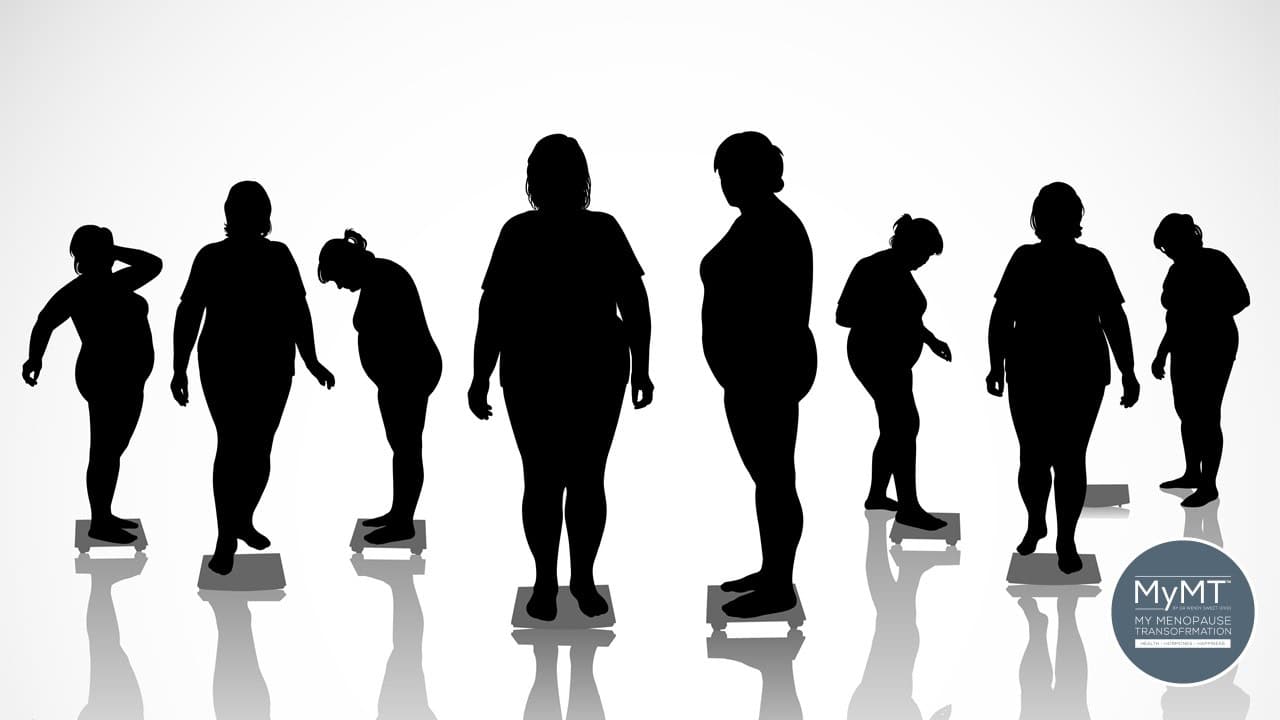If there were some foods that you could incorporate into your daily food intake, that contained compounds to help you change unhealthy white fat and turn this to highly metabolic brown fat, would you eat them?
For those of you holding onto menopause belly fat, then yes, I hope you would.
We often get really confused about what type of foods help to shift stubborn menopause fat and I know from my own experience, that we often turn to diets and exhausting exercise routines to lose this fat too. But what if there were certain ingredients that you could include in your day, that help you to turn harmful storage fat cells, to more healthy metabolically active fat cells?
It’s been a really busy, stressful year for so many of you judging by the emails I receive from women around the world. Many of you already know that when our menopause transition arrives, there is a perfect storm between our changing hormones, our decreasing metabolism, not sleeping and of course, stress. All of these factors contribute to increased storage of superficial white fat around our abdomen, diaphragm and breasts.
This type of fat that defines menopause weight gain is called White Adipose Tissue (WAT) and is the type of fat that is stored easily around your belly, diaphragm, breasts, thighs and even around your heart.
But this type of fat is superficial fat and is unhealthy fat because these cells store excess energy from food as well as oestrogen. Hence, the fat cells expand. If you have a lot of belly fat, then this is the fat that you don’t want.
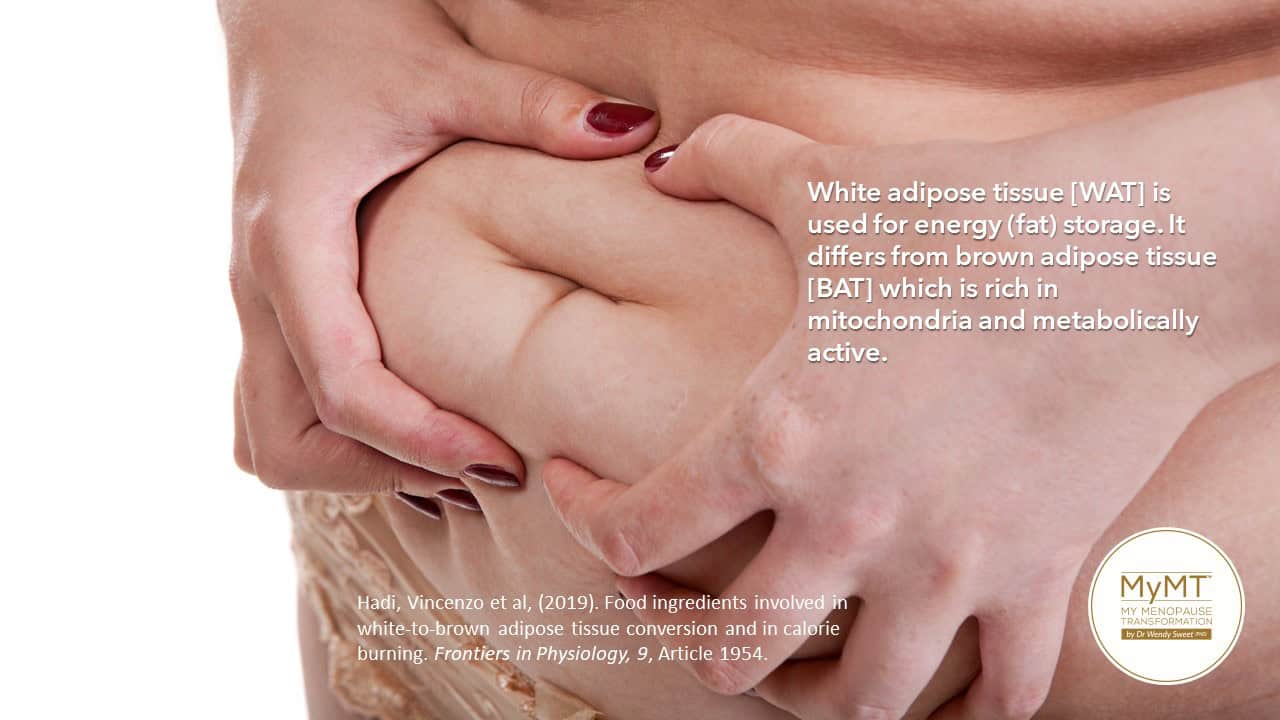
The type of fat that is healthier for us is called Brown Fat, or Brown Adipose Tissue (BAT) and it is more metabolically active.
This means that it has higher numbers of mitochondria in it. These are the cells that help to turn fat into energy to help us get through our day. Oxygen and fats work together within the mitochondria, to make energy that fuels our metabolism. It’s why you may have heard that mitochondrial cells are your fat-burning cells.
So, can we turn white fat cells which are just storage cells, into metabolically active brown fat cells, that help us to manage our menopause weight?
Well, with the help of six ingredients found in foods, new research suggests that we can.
It is well known that the management of body weight is primarily based on lifestyle modifications and modulating the absorption of food. Most people know that exercise helps too but few realise that there are evidenced compounds in foods that help to change storage white fat to metabolically brown fat.
How remarkable that our body can do this, with the right help.
Research over the last decade has provided evidence to support the role of bioactive dietary components in the prevention and/or treatment of obesity and associated metabolic disorders. Food-derived components are known to help stimulate energy expenditure by switching white fat to brown fat.
Newly available research indicates that there are SIX main compounds in foods that actually help white storage fat to move towards becoming brown metabolically active fat.
So, for those of you who might be getting a little bit off track with your weight now that we are half-way through another year, I thought it would be good to know what these foods are and how the compounds work to help you ‘burn fat’. Perhaps some of you might want to add these to your shopping list over the weekend.
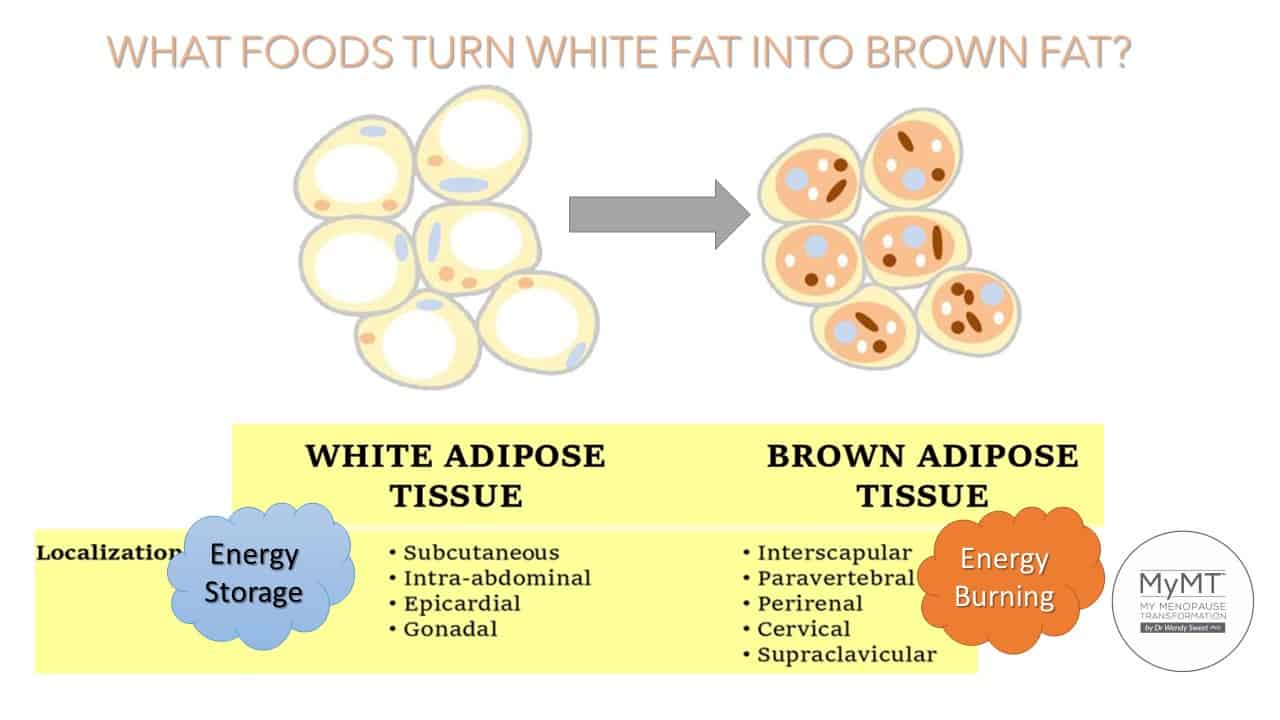
- Capsaicin and Capsinoids: These compounds are active in peppers. Many of you will know about capsaicin which is an active ingredient of hot pepper. This is the ingredient that is responsible for the pungency and hotness sensation of chilli peppers. Capsinoids are in red peppers and doesn’t have the pungency and heat of chilli peppers. Both these compounds have elicited enormous interest in fat-loss supplements because of their role in enhancing fat oxidation (breaks down in the presence of oxygen) and increasing energy expenditure through turning white fat cells towards brown fat cells.
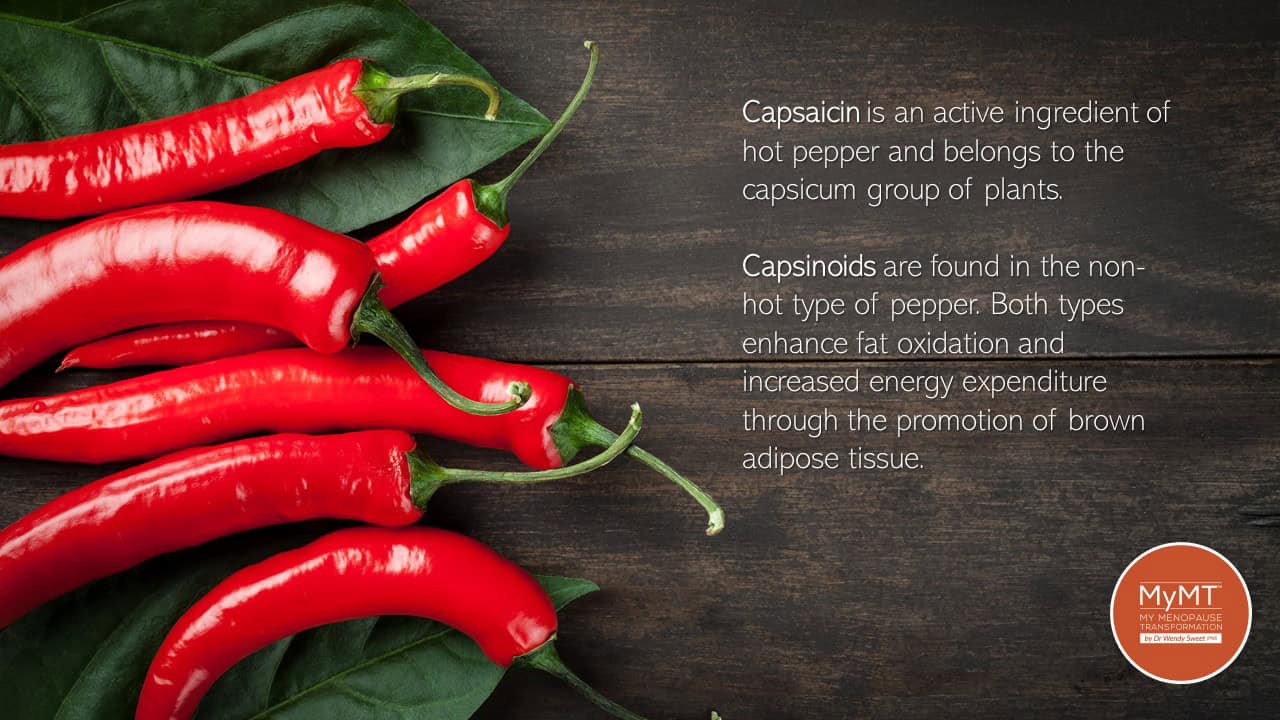
2. Resveratrol: This is a natural stilbenoid, which is a type of natural phenol, produced by several plants in response to injury or when the plant is under attack by pathogens, such as bacteria or fungi. Sources of resveratrol in food include the skin of grapes, red wine, blueberries, raspberries, mulberries, and peanuts. Resveratrol is getting interest in health and longevity research as well as metabolic research, because it helps to improve the size of mitochondria. Many of you have heard me mention that as we lose muscle size and density in menopause, we also lose mitochondria numbers. This impacts the muscle’s metabolic activity and the rate of fat-burning. Adding some resveratrol-rich foods and yes, even some red wine, to your diet, will help you to burn fat.
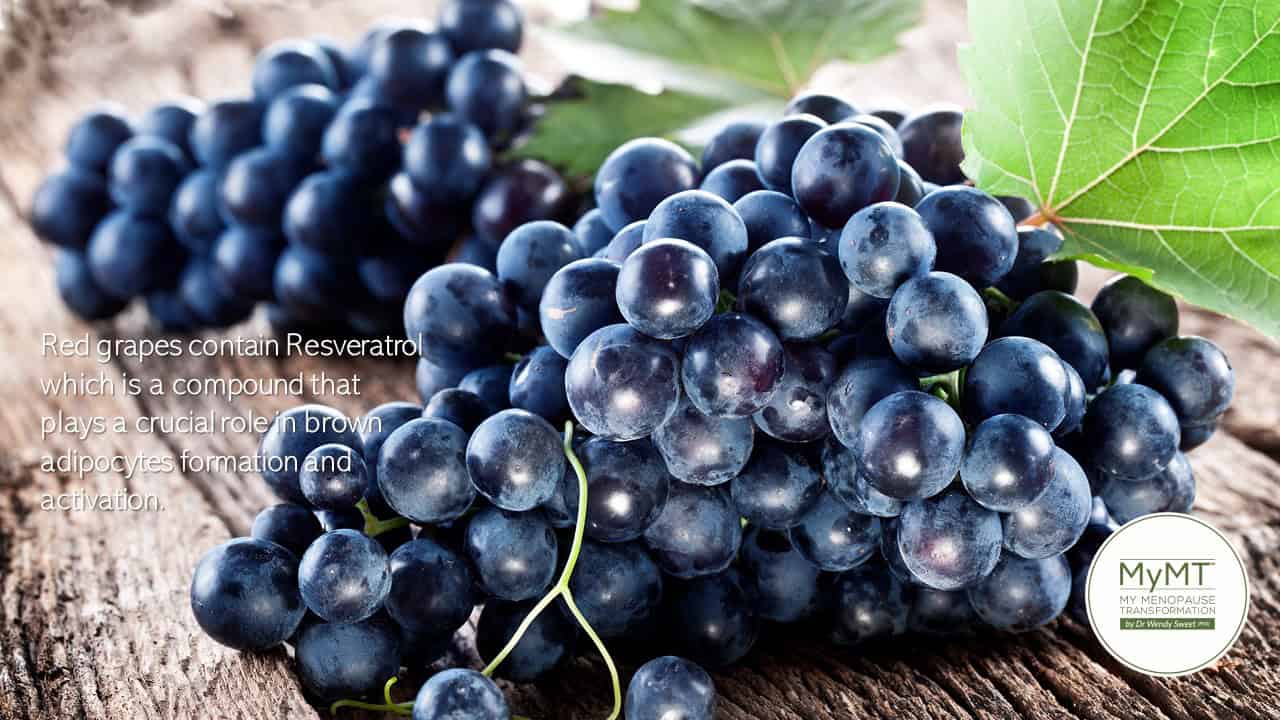
3. Curcumin: If you are taking supplements for joint pain or hot flushes, then you might want to see if these contain curcumin or it’s other name, diferuloylmethane. Curcumin is a yellow-coloured compound which is found in the extracts of Turmeric roots. Whilst we all know that this is commonly used as a spice in cooking, it has also been recognised for its potential value as an anti-obesity agent (Mantzorou et al, 2018). Although many of the studies have been conducted on mice and rats, results are promising that regular curcumin intake promotes energy expenditure.
4. Green Tea: If any of you have ever taken fat-loss supplements, then these may well have contained tea catechins extracts. Whilst some studies don’t support the research on catechins in green tea and their effect on fat-burning, other scientists report that green tea extracts have caffeine, which is known for its thermogenic (heat producing) properties. This thermogenic effect as a result of the caffeine, may well play a role in the increase in brown fat in some studies into the role that green tea catechins play in the recruitment and activation of brown adipose tissue in humans.
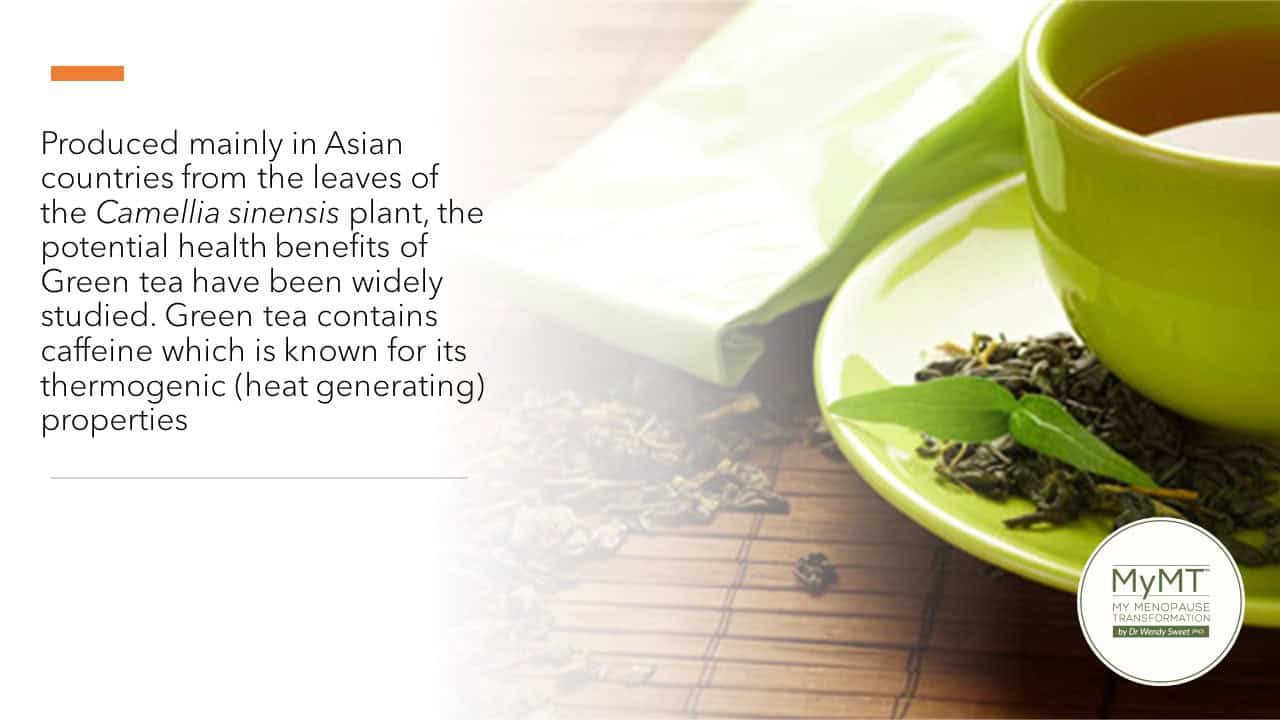
5. Menthol: Also known as mint camphor, menthol is either produced synthetically or obtained from peppermint Mentha piperita. For centuries, mint/menthol has been known to have anti-inflammatory, anti-pruritic, anti-viral and analgesic effects. Now researchers also know that it enhances metabolic activity in both brown and white adipose tissue. Menthol is cooling and therefore, plays a role in increasing non-shivering thermogenesis (heat generation) in muscles and now, fat cells. We all know that when we buy some joint or muscle-healing creams, that there is a slight analgesic effect when you put it on your skin. This is due to the menthol and researchers now think that this substance has a promising role to play in regulating energy balance and metabolism in weight management.

6. Fish-derived Omega-3 Fatty Acids: I’m sure that most of you have heard of omega-3 polyunsaturated fatty acids (PUFAs). They are the major type of fats found in fish oil supplements and in fatty fish such as salmon. Whilst the supplementation of fish oil has been shown to increase brown tissue and protein levels in rats, more recent research suggests that dietary PUFAs lower the amount of abdominal white adipose tissue. How this happens is still a bit unclear but the researchers suggest that fish oil contributes to brown fat production by stimulating the digestive tract to trigger, via the brain, increases in sympathetic nervous system response. Increased nervous system activity is known to increase adrenaline, which in turn increases metabolism.
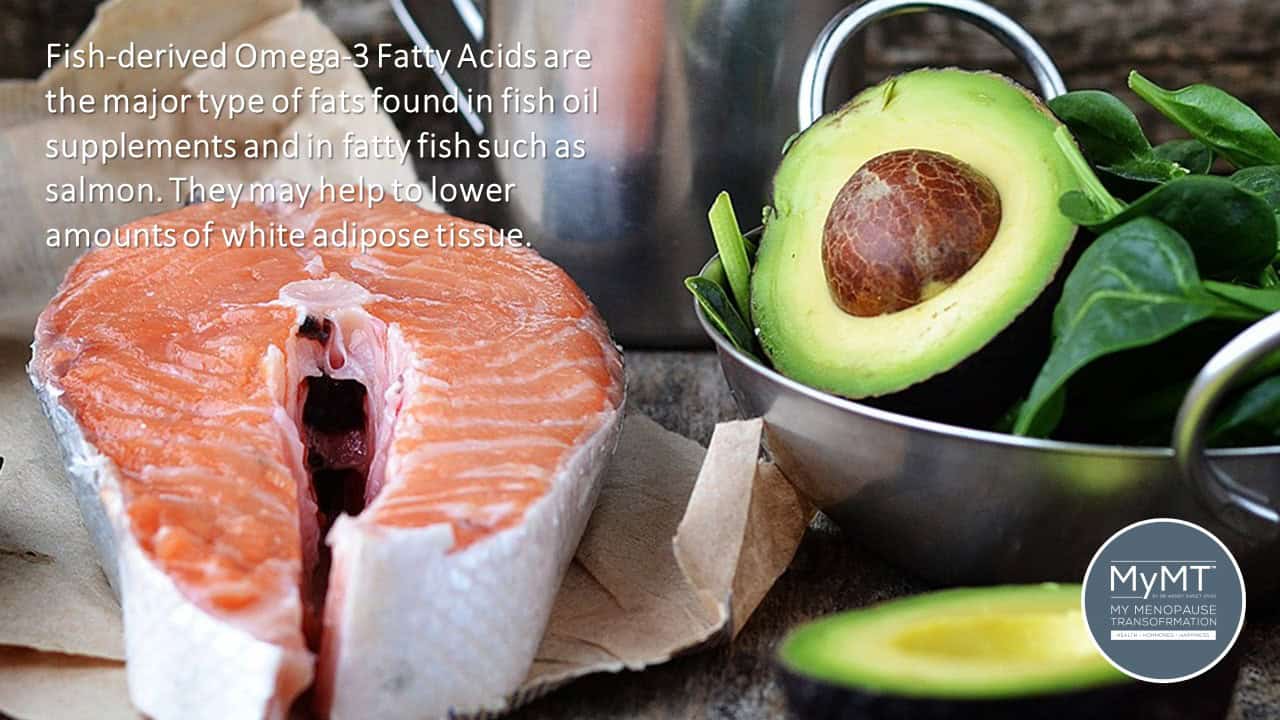
Metabolically active brown fat has only recently been discovered in adult humans and this has led to better understanding about the role of dietary molecules that influence healthier brown fat production, whilst lowering unhealthy white fat size.
For women in menopause, this is interesting research. Many of us already know that our menopause transition is a vulnerable time for unhealthy weight gain.
Whilst scientists don’t quite fully understand how much of these compounds are needed to elicit fat-burning, thermogenic effects, I think it is encouraging that in a world where post-menopause obesity leads millions of women down the path towards changing heart health and Type 2 Diabetes, it helps to know that these studies are being undertaken.
All of these foods can be found in the MyMT™ Food Guide which is an important component of the scientifically evidenced MyMT™ programmes. I’ve enjoyed bringing the research about these ingredients to you in this post and hope that over the weekend, if you’ve been struggling with your menopause weight and other symptoms, that you can explore the MyMT™ Transform Me programme which is on SALE for the month of July.
If you aren’t quite ready to join me on the coaching programme, then I hope you can make some time on your own to have a listen to the Masterclass on Menopause.
I’ve recently updated this with all the latest information you need at a time of our lives when changes are happening that may make us feel out of control with our health.
Dr Wendy Sweet (PhD)/ MyMT™ Founder and Member: Australasian Society of Lifestyle Medicine.
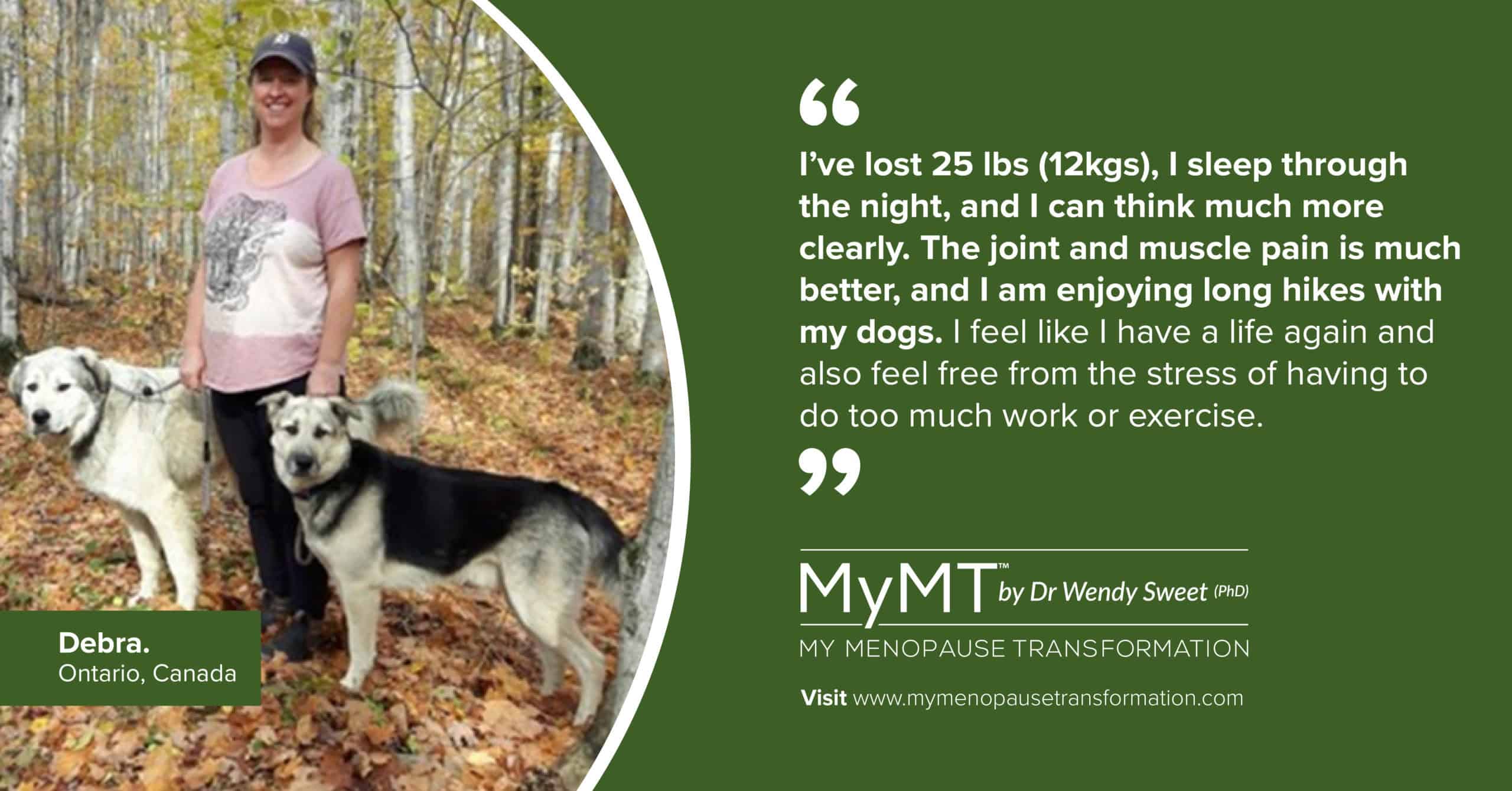
References:
Andrade J., Frade A., Guimarães J., Freitas K., Lopes M., Guimarães A., de Paula A., Coimbra C. & Santos S.. (2014). Resveratrol increases brown adipose tissue thermogenesis markers by increasing SIRT1 and energy expenditure and decreasing fat accumulation in adipose tissue of mice fed a standard diet. Eur J Nutr. Oct;53(7):1503-10. doi: 10.1007/s00394-014-0655-6. Epub 2014 Jan 28. PMID: 24468941.
El Hadi H., Di Vincenzo A., Vettor R. & Rossato, M. (2019). Food ingredients involved in white-to-brown adipose tissue conversion and in calorie burning. Frontiers in Physiology, 9, o1954. https://www.frontiersin.org/article/10.3389/fphys.2018.01954
Mantzorou M., Pavlidou E., Vasios G., Tsagalioti E., & Giaginis C. (2018). Effects of curcumin consumption on human chronic diseases: A narrative review of the most recent clinical data. Phytother Res. 32(6):957-975. doi: 10.1002/ptr.6037.
